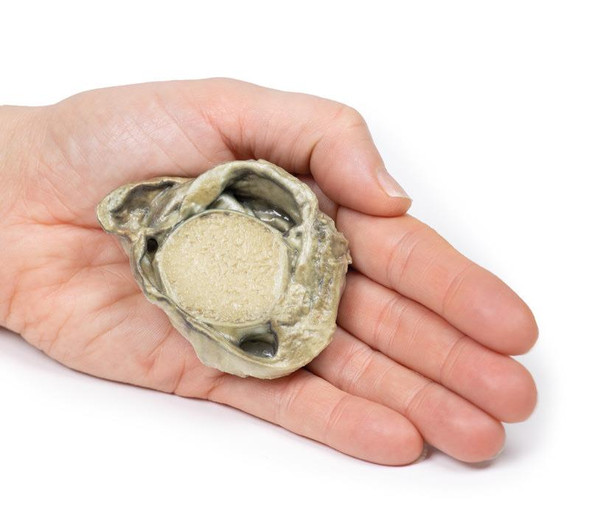Description
Clinical History
A 36-year old female has a large postpartum hemorrhage after the birth of her 4th child by breech delivery. Her previous 3 children have all been breech deliveries, and no miscarriages. She has a history of intermittent mild abdominal pain. The obstetricians were unable to stop the bleeding and performed an emergency radical hysterectomy and bilateral salpingo-oophorectomy. The patient and baby made a full recovery.
Pathology
This hysterectomy specimen is of a bicornuate uterus, fallopian tubes and ovaries; sliced coronally and mounted to display cut and external surfaces. Both uterine bodies are equal in size and share a common cervical canal. A few small cysts are present in the cervix.
Further Information
A bicornuate uterus is a congenital uterine malformation where the uterus fundus has an indentation of more than 1 cm. The vagina and cervix are usually normal. There is generally one cervix. There are usually two moderately separate endometrial cavities. Bicornuate uterus develop during embryogenesis when the Mullerian ducts only partially fuse instead of completely fusing.
The risk of developing these malformation increases if exposed to diethylstilbestrol (DHS) in-utero, a synthetic estrogen previously used to prevent pregnancy loss. The karyotype of most women with uterine malformations is 46,XX.
These malformations are present in around 0.5% of women, although the actual number may be greater as not all women are symptomatic. Symptoms may include pelvic pain (cyclic and non-cyclic), abnormal uterine bleeding and discharge and urinary tract infection (UTI). In pregnancy bicornuate uterus may lead to recurrent miscarriage, pre-term labor, fetal growth restriction, fetal malpresentation and placenta previa. Malpresentation of the fetus leads to increased need for caesarean section. There is increased risk postpartum or placental retention and postpartum hemorrhage.
Bicornuate uterus is usually diagnosed with pelvic ultrasound scan. MRI scanning is rarely used to consolidate the diagnosis. Most cases do not require any treatment.
Advantages
- Anatomically accurate and identical to real specimen
- No ethical issues - not real human body parts
- Reasonably priced
- Available within a short lead time
- Reproducible, several identical prints can be used as a classroom set
- Can be produced in different sizes to cater for the needs of the teacher
Human Cadavers
- Access to cadavers can be problematic. Many countries cannot access cadavers for cultural and religious reasons
- Cadavers cost a lot money
- High cost for establishing your own plastination suite
- Wet specimens cannot be used in uncertified labs
- Dissection of cadavers is a lot of staff time and that is a cost
- Storage of cadaver material needs special refrigeration etc. which has coast
- If you want another specimen you have to start all over again
Plastinates
- Costs
- Ethical issues
- Timeframe for plastination process
- Many countries do not allow their importation
- One of a kind
Superior 3D print results compared with conventional methods
- Vibrant color offering with 10 million colors
- UV-curable inkjet printing
- High quality 3D printing that can create products that are delicate, extremely precise and incredibly realistic
Clear Support Material
- To avoid breakage of fragile, thin, and delicate arteries, veins or vessels, a clear support material is printed on such spots. This makes the models robust and can be handled by students easily.



















